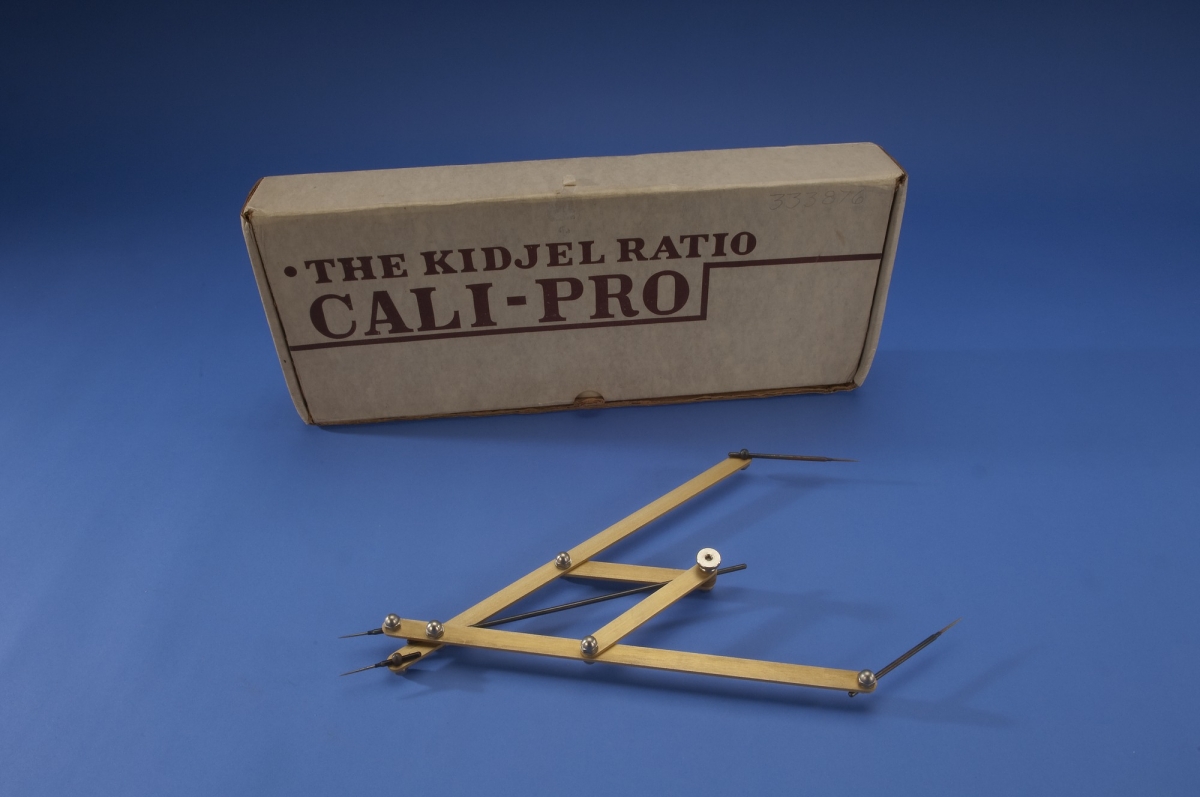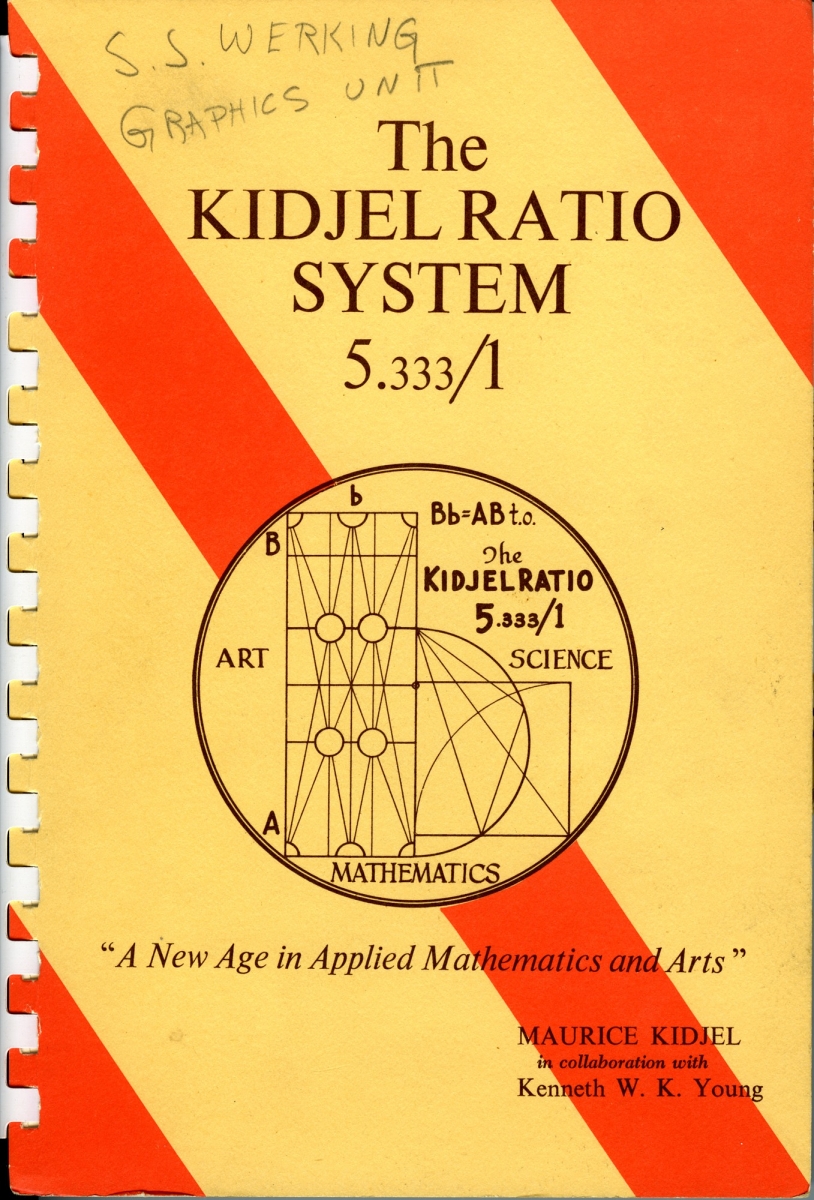Mathematical Treasure: Maurice Kidjel's Ratio Cali-Pro

Kidjel Ratio Cali-Pro Proportional Dividers, ca 1962, Smithsonian Institution negative number DOR2012-2554.
Sometimes, people's enthusiasm for mathematics can lead them into the territory of mathematical cranks. Maurice Kidjel (1888–1976) was a well-regarded painter of portraits and nature scenes who lived in Honolulu. In the late 1950s, he researched proportions and concluded that the ratio most pleasing to the eye is 1:5.333. He devised a drawing instrument that is essentially a specialized form of proportional dividers permanently set at this ratio. Artists, draftsmen, letterers, and others could create drawings by setting the long needles so that they spanned the width of the large part of the drawing, and then turning the dividers over and using the short needles to make a small part of the drawing that was in proportion to the large part of the drawing.
Although the device was never as popular as traditional proportional dividers, which could be set to multiple proportions, it did sell relatively widely in the 1960s and 1970s. Kidjel, however, tried to push his invention further by claiming that the 1:5.333 ratio was the key to solving the three classical Greek construction problems (doubling the cube, trisecting an angle, squaring the circle) with a compass and straight edge. His solutions rested on a false definition of π and thus were not mathematically valid. Yet, his ruminations on the so-called "universal ratio" came to the attention of other prominent Hawaiians, including the state's first full member of Congress, Daniel Inouye, who read a tribute to the ratio into the Congressional Record on June 3, 1960, and Church College of Hawaii President Richard T. Wooton, who discussed Kidjel's work in a 1963 lecture on the nature of God.

Kidjel described his faulty ideas about mathematics in the instruction manual for his reliable instrument, published in 1962 with his business partner, Kenneth W. K. Young, Smithsonian Institution negative number AHB2012q05985.
This object and more standard dividers and drawing compasses from the Smithsonian's National Museum of American History are now shown and described at the website http://americanhistory.si.edu/collections/object-groups/dividers-compasses.